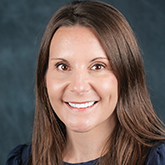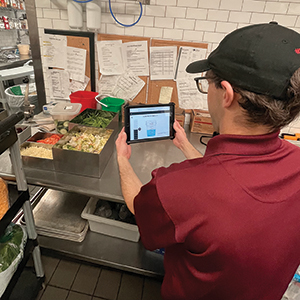Focus on sustainable food services operations
It’s been said that “food is medicine” and that proper nutrition can actually aid in the healing process. It stands to reason then that good tasting and nutritious food can have a positive impact on patients, since food is one of the areas measured by the Hospital Consumer Assessment of Healthcare Providers and Systems (HCAHPS) survey about a patient’s hospital stay and experience.

“HealthTrust’s contracted supplier Foodbuy (Contract #43973) offers members a vast selection of healthy and sustainably sourced foods,” says Sam Potter, MHS, RD, BS, Senior Director, Food & Nutrition Services at HealthTrust.
Working closely with HealthTrust’s Food & Nutrition Advisory Board, Potter shares that, “increasingly more member organizations have expressed interest in sustainable food options.” These take into consideration things like agricultural practices and how food is produced, processed and distributed. A number of members also wanted options for regionally and locally distributed food, as well as labeling that is easy to understand and with fewer artificial ingredients.

“Foodbuy’s online ordering system makes it easier to tell when a buyer is making a sustainable purchase,” explains HealthTrust’s Director of Food & Nutrition Kristie Schutt, RD, LDN. “At the point of order, there is information to identify items that are biodegradable, local and organic, or fair trade certified.”
“Waste Not”
Supplying food to a hospital setting is no small undertaking and food waste can be significant. “A number of hospitals are looking at initiatives to reduce food waste,” shares Potter. Foodbuy can help teams order the right type of product to fit recipe and serving needs, so waste is minimalized. Other strategies include not tossing products that don’t meet ‘appearance standards’ and learning how to creatively incorporate leftover products into recipes.
Here are some of the available program options for waste reduction:
- Goodr—Instead of throwing away surplus food, member hospitals can now have it picked up and delivered to another end user such as a food bank or shelter for a small fee, thanks to Foodbuy’s partnership with Goodr. In turn, the facility receives documentation recording its donations for tax credit purposes.
- Imperfectly Delicious Produce—When ordering fruits or vegetables to be used outside of their full form, members can select ‘imperfectly delicious produce’ on the Foodbuy order system. “While these fruits and veggies may look like misfits,” Schutt says, “they taste just as good as their more perfect counterparts. And, by incorporating them into recipes they are being kept out of the dump.”
-

A team member from Franciscan Health using the Waste Not 2.0 tablet. Waste Not 2.0—Through use of a programmed tablet, Foodbuy enables hospital food service teams to document what they experience as they work in food production. “Consider, for example, how much food waste could be generated when a facility doesn’t order precut lettuce,” Potter explains. “With the Waste Not 2.0 program, a team member can photograph, document and measure the cores, ends or stems that have to be cut off and tossed. By the end of a predetermined time, (e.g., a week or a month), the documented waste can be measured and a dollar amount attributed to it. Over time, leadership is able to see waste through the lens of both cold and hot food production. Teams can then work on initiatives like ordering differently or getting more creative with leftover products,” she adds.
Embracing the program
Franciscan Health started using Waste Not 2.0 in the spring of 2024, according to its Nutrition Informatics Specialist, Michelle Schelling, RD. “We did a site-by-site rollout, then slowly bringing on four more sites. There will be two additional facilities to get started before all of our hospitals are utilizing the program,” she says.
The staff’s experience has been positive, and it has found the tablets very user friendly. “For Franciscan Health as an enterprise, not all kitchens are created equal, so the ability to customize by location was critical for us. Foodbuy tailored the program to our needs,” Schelling explains.
“Two of Franciscan’s locations have made recipe changes to patient menus as a result of what they’ve tracked using the Waste Not 2.0 tablet,” Schelling says. Recipe changes are a direct result of what the staff saw and recorded in the Waste Not 2.0 tablet. “When the staff records the amounts that have been discarded, it’s because the recipe yield is greater than the amount consumed by patients and/or cafeteria customers. Altering the recipe/production of an item is necessary to reduce waste going forward.”
“GET THE SKINNY” ON REDUCING FOOD WASTE by emailing commercial@healthtrustpg.com
Share Email Environmental Preferable Purchasing, Food & Nutrition, Operations, Q2 2025




